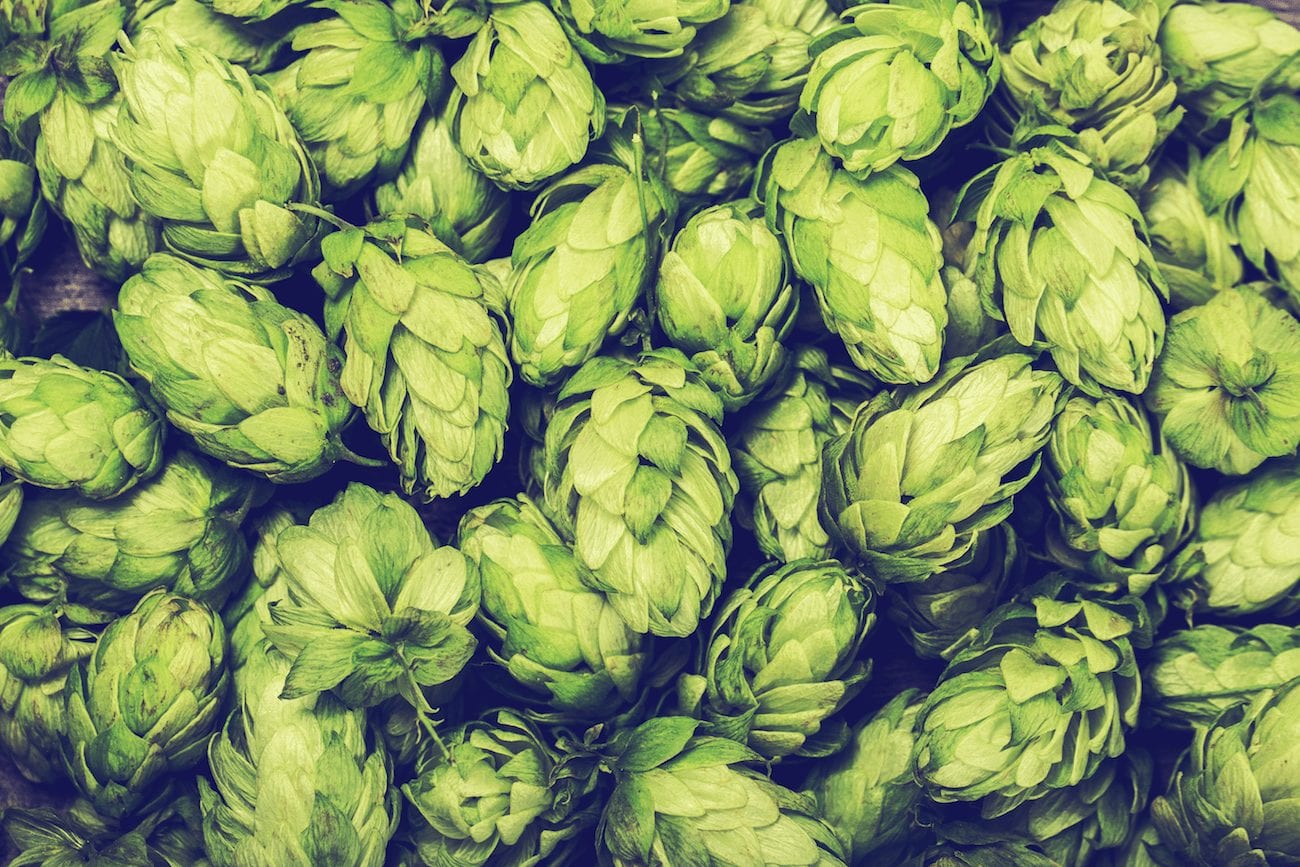
No other plant is as closely related to cannabis as hops. The two are the only economically important members of the botanical family — called the cannabaceae — which contain 270 aromatic species in all (Encyclopaedia Britannica). While cannabis has been bred for a wide variety of uses, from low THC hemp to the dankest green bud, the hop plant has had a more focused career as a main ingredient in brewing. It’s used for both its flavor and antiseptic properties that discourage the growth of unwanted microbes. Yet, it may come as a surprise to learn that hop flowers can be smoked and will mildly affect your head.
Similar to cannabis, farming hops in the U.S. was shaped by prohibition. Cannabis still languishes under federal prohibition, stunting the natural growth of what could have been a very profitable industry. Alcohol prohibition in the 1920s affected hops. A Rogue Farms’ blog post called “Everything You Didn’t Know About Hops And Prohibition,” reported that during this era, “Thousands of small breweries disappeared, never to return.” But, that same blog claims that hops production in Oregon tripled between 1919 and 1933 due to sales to Europe, where agriculture had been destroyed by World War I.
Like cannabis, only the female flowers were wanted, and sought for the resins and essential oils found in their glands. Those resins and oils are depleted in pollinated flowers, so hops growers carefully cull male plants. Sound familiar? As in cannabis production, those female flowers have been developed for an array of different flavors, each with its own name and special characteristics.
Intriguingly, most of the basic flavor categories — floral, pine, citrus — sound like cannabis, too. Even the names can sound similar. The 2014 article, “What Makes British Hops Unique in the World of Hop Growing?” celebrates the popular variety known as Brewer’s Gold, introduced in 1934 and now a major “source for all the world’s bitter hop varieties.”
In order to bring a local voice to this research, I spoke to Michael Smith, head brewer for the Eel River Brewery facility in Scotia, California. Michael said their hops come from the greater Pacific Northwest area: Oregon, Idaho, and the Yakima Valley of Washington. These varieties provide different locales for different flavor profiles. He confirmed that brewers complement and balance the sweetness of the malt with the bitterness in hops. He also spoke of the two divergent paths hops growers have taken, either increasing that famous bitter quality or enhancing those aromatics that create floral, pine or citrus accents.
Traditional formulas that honor the European roots of beer-making lean heavily toward the bitter side, and Eel River Brewing makes quite a few. Michael was delighted to introduce me to what he called the “new school style,” like various West Coast IPAs, built around the more aromatic hops varieties. Eel River’s double and triple IPAs, rather than being twice or three times as bitter, actually emphasize the aromatic side of hops. Their Emerald Triangle Double IPA goes all out with aromatics, described on their website as featuring “a pine character with heavy citrus notes and tropical fruit.” You can also try their specialty brew, Earth Thirst Double IPA, with its experimental hops grown in Oregon.
Both the bitter and aromatic flavors bred into hops varieties derive from the chemical cluster brewers know as the alpha acids. These include terpenes that cannabis and hops have in common. One of those terpenes, beta-caryophyllene, binds to cannabinoid receptors in the brain, according to a 2008 study published in the Proceedings of the National Academy of Sciences of the USA. The study indicates that this cousin to cannabis may prove effective in the treatment of inflammation.
Cannabis and hops flowers have a long history as an herbal medicine with sedative properties. The University of Michigan School of Medicine lists insomnia, anxiety, and poor digestion as the top uses for hops. Other resources list dried hops flowers as a supplement similar to valerian and is used for anxiety, restlessness and insomnia.
Other hop sources caution that “alcohol interacts with hops” to magnify the sedative effects in each. We know that the resins in cannabis, like the ones in hops, are soluble in alcohol. How might the varying amount and type of alpha acids in hops interact with the effects of the alcohol? Seems that there must be some small drug interaction going on all the time, though I’ve not found that discussed anywhere.
This writer has experienced the mild sedative effects from smoking hops. Having heard somewhere that “hops can get you high” and being without the kind bud at the time, I was delighted to find dried hops flowers in the bulk section of my food co-op. I brought some and experimented. With the outer shell of the flower removed, the inner parts with their resins do indeed produce a mild sense of relaxation and it’s legal too. Brewer Michael said he had no personal knowledge of that, but you can find anecdotes online about brewers toking hops.
Whatever the interaction effects, hops will long be important to the making of great brews.


Leave a Reply